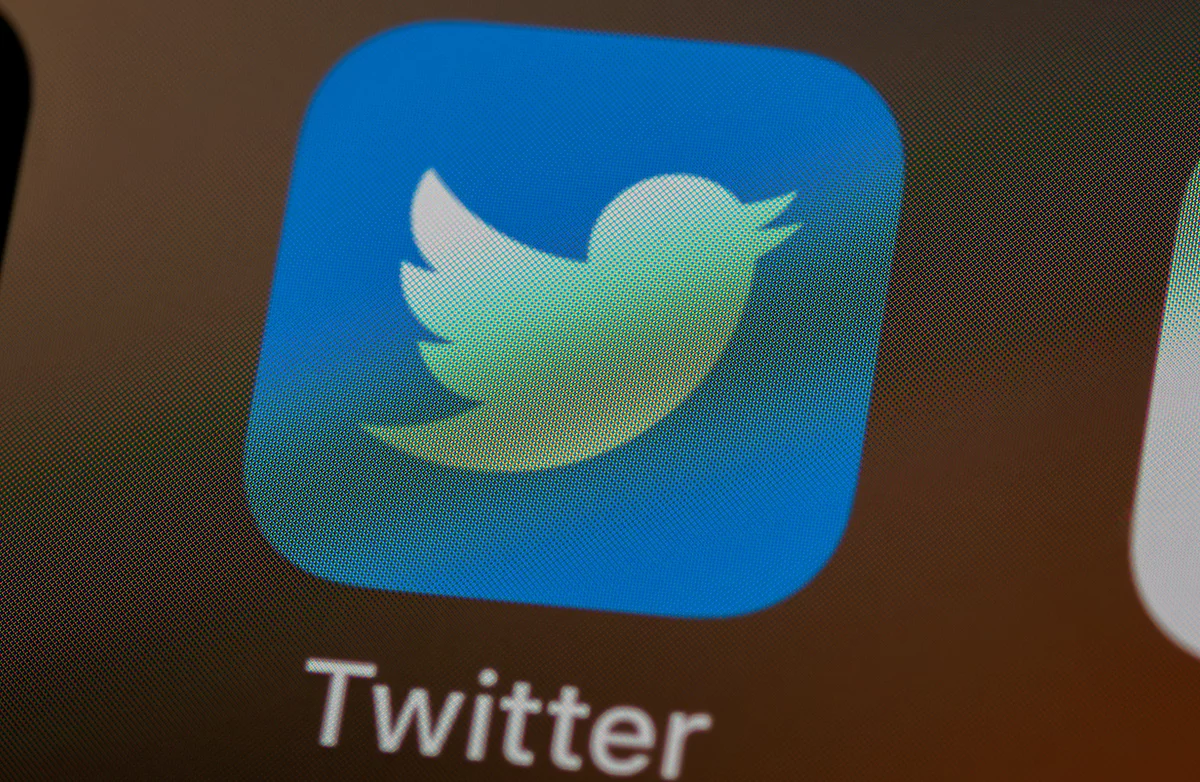The Life and Evolution of Using @SociologyTheory in the Sociology Classroom
The Twitter handle @SociologyTheory was born in 2014 and has been a part of my teaching identity as long as I have been teaching college courses. While I have consistently managed the page over the course of the past five years, this handle has had a life of its own, being impacted by many. Here I would like to tell the interconnected story of my development as a college instructor and the Twitter handle, @SociologyTheory.
The Conception of @SociologyTheory
While the actual Twitter handle was established in 2014, @SociologyTheory was conceived a year earlier in April of 2013. This was when I attended my first academic conference. At the time, I was about to complete my second year of undergraduate study at Front Range Community College in Fort Collins, Colorado. At FRCC I mostly took a collection of sociology and psychology courses (along with required coursework), but my plan was to go into psychology. Thus, I was a member of the college’s Psychology Club.
The Psychology Club arranged for its members to attend the Rocky Mountain Psychological Association’s conference in Denver in the Spring of 2013. Abbreviating this portion of the story, I ended up in a session about teaching and learning. In this session, I heard Psychologist Bethany K. B. Fleck talk about her research with colleagues titled, Using Twitter to Reinforce Classroom Concepts.
In this research Dr. Fleck and others conducted lab-based research that showed students were more willing to engage with course material when it was reinforced through Tweets. I explicitly recall writing in the margins of my program, “how do you prevent it from becoming a game?,” a notion that would resurface in the coming years.
The Birth of @SociologyTheory
Fast forward to 2014. I was now in my first and last year as an undergraduate student at the University of Northern Colorado, a medium sized liberal arts college. I had taken enough summer courses to graduate in only three years. The sociology department at the University of Northern Colorado offered a hybrid graduate/undergraduate practicum in “Teaching Sociology, ” where students are paired off with instructors as Teaching Assistants to get classroom experience to incorporate with pedagogical coursework.
The course also gave us the opportunity to have constructive conversations about practical issues instructors face such as a lack of student engagement, productive discussion, or general interest in the subject matter.
My Advancement and Advancement of @SociologyTheory
As I graduated with my B.A. and transitioned to the M.A. Program in Applied Sociology at the University of Northern Colorado, those teaching discussions paired with Dr. Fleck’s RMPA presentation, loomed in my mind. For this reason, I reached out to Dr. Fleck at Metro State University in Denver, Colorado. She agreed to meet with me and we discussed taking her ideas out of the laboratory environment and implementing them in the classroom. One of her suggestions was that if I was going to go down this road, I should apply through the IRB and collect data, a suggestion that I would later take.
I took the ideas generated in my meeting with Dr. Fleck and began pitching professors at UNCO the idea of incorporating Twitter in the classroom. At first, I was met with a combination of excitement, mixed with hesitancy and reluctance. The best I was offered was a trial through the department’s Sociology Club. Some combination of club leadership was tasked with starting a Twitter page and attempting to engage club members with sociological content. All in all the attempt failed.
This is when I brought my ideas to Kelly Mason-Davis. Kelly was a lecturer at UNCO who I took classes from at both FRCC and UNCO. Kelly was a student favorite and known for an “outside-the-box” lecture style. Almost without hesitation, Kelly agreed to a collaboration, even admitting to Twitter being foreign. Yet, this arrangement developed into a long lasting collaboration and friendship.
Design and Implementation
Over the summer of 2014 Kelly and I designed an Introduction to Sociology course that relied heavily on Twitter as a tool for teaching and learning. In these early negotiations, I recall Kelly reflecting on how many students would come up to her after classes and show her news articles, pictures, memes, and all sorts of other content on their devices.
With this in mind we decided to keep the instructions vague and encourage creativity. Kelly already had a successful course design so we retained many of her course elements, with the addition of weekly “Tweets” and an updated version of quarterly “Response Assignments” that utilized Twitter.
Kelly and I also took Dr. Fleck’s advice and submitted an IRB proposal for approval to collect data from students who participated. Thus, beginning “The Twitter Project” as well as a rebirth for the handle @SociologyTheory, the formerly failed attempt to excite members of the Sociology Club.
Original Use of Twitter in the Sociology Classroom
As designed, the original use of Twitter involved four steps. The first step simply asked students to set up a Twitter account and familiarize themselves with the platform. Step two was the weekly work. You can see the instructions below, but more or less, students simply had a weekly assignment connecting a course concept to an original Tweet. We would use @SociologyTheory to retweet everyone’s posts so they could easily access their classmates’ work.
The third step asked students to engage with their classmates by liking, commenting, or retweeting. The final step asked students to select one of their Tweets at the end of each quarter of the semester and expand it into a 2-page sociological analysis.
The Rise of @SociologyTheory
The first semester using @SociologyTheory in the classroom was wildly successful. Our open-ended survey questions yielded astounding reviews at the end of the semester.
Students enjoyed using Twitter as a learning platform.
“I think it is very outside the box and doesn’t feel like work, so you actually learn things and remember.”
“I liked it because it showed how easy it is to find sociological concepts.”
“This class is way ahead of its time.”
Using Twitter encouraged students to tell others about sociology.
“I discussed my chapter tweets with many of my friends outside of class because I thought it was important for them to know and see the connections of how sociology can relate to everyday life. I especially discussed the gender tweet to my friend that was in another sociology class to see her views and compare.”
“I shared a few tweets with my roommates and friends one example was my tweet with Don Draper laughing about women being bosses the specific time was interesting because it led to a conversation about sexism in America.”
Students were empowered to engage in social discourse.
“Twitter has been such an amazing experience for me. I not only understand and remember terms but I am able to make an impact on others thinking.”
“People retweeted all of my tweets. Some more than others. When I posted saying “women should get paid the same amount as men,” one guy responded saying that I should do empirical research before making statements like that. That pissed me off.”
Students felt empowered, specifically because of validity from figures online.
“I had a Stanford professor retweet my stuff and I also had a professor in Ireland retweet me.”
“I have followed others and people have followed me. My favorite followers which impresses me are professors from Mexico and a man from France.”
“I have gained followers mostly from Latino countries, Spain and Italy. Most were professors.”
“I loved when any other sociology professor would retweet because it validated my correctness.”
Overall, Kelly and I both knew that we were on to something and we quickly began writing out findings and preparing to implement in more classes. Our next step was to see if we could encourage interaction between Kelly’s students at FRCC and her students at UNCO. We submitted an IRB proposal at Front Range Community College and suddenly we had a collaboration that consisted of students at UNCO and two campuses of FRCC. Obviously, this was made possible by a great deal of hard work and investment on Kelly’s part.
Spreading the Word about @SociologyTheory
For the next two years (2015-2016) Kelly and I worked on both expanding the reach of @SociologyTheory and spreading our message to other professors and sociologists. Our Twitter following began to grow and as you can see in the Tweepsmap.com image below our following was widely distributed throughout the world.
Through this period of time @SociologyTheory’s following grew from roughly 1000 to around 12,000 over the course of two years. At its peak the page hosted students from 11 classes, covering three course areas (Intro, Social Problems, and SOC of Minorities), distributed across campuses in three separate cities, and organized between two professors (More on Pepper Mueller to come!).

Telling Others About Our Innovative Teaching Techniques
During this period of time, we also invested in telling others about our findings and unique course design. We started by giving presentations at university-based events, such as one where Kelly and I gave a 5-minute “Lightning Talk” and held discussions in a poster session, including the poster below. This presentation would eventually find its way into the university’s “Teaching College,” a training course for current university instructors.
We also attended and presented at sociology conferences such as the Pacific Sociological Association and the Association for Applied and Clinical Sociology. We even branched off and spoke at interdisciplinary conferences such as the E-Learning Consortium of Colorado.
For my work on this project I was awarded Alpha Kappa Delta‘s Teaching and Learning Fellowship, to attend a Teaching and Learning Pre-conference at the Pacific Sociological Association.
Pushback Against Using Social Media in Sociology
During the time presenting our research, we were well received by our department, our university, amongst applied sociologists, and the online teaching community. The one time we received some pushback was from academic sociologists.
The pushback I speak of was at the Pacific Sociological Association. I was a first year graduate student and on this occasion, giving our presentation alone. You can read another professor’s original comments on my presentation below, but one particular note of interest states, “Hard Act to Follow But Not Tentative.”
Let me explain the act I was following. This was a good-sized session dedicated to teaching and learning in sociology (approximately 50 attendees). My presentation was scheduled third out of four. The first presentation was a well-respected tenured professor who had built part of her career writing about pedagogy.
Her message of “put away all digital distractions and, get back to the chalk-board-basics” was an inspirational display in the value of bringing students to the field of sociology. The second presentation was a long-time lecturer who gave a presentation that sounded like he was trying to tell other professors that we need to trick or manipulate students into liking sociology, but he did this in a relatable manner according to audience reactions.
Reflections on Pushback for Using @SociologyTheory
Certainly he had a more explicit point, but as I sat there listening, all I could hear were the applause of ideas suggesting we need to be more rigid and dispel digital distractions, just before I was about to tell everyone they should bring Twitter in the classroom. According to my professor’s notes on my presentation, I was “not tentative,” so I guess that is good. My point, though, is that sociology has been the only place where our ideas were met with traditional backlash.
Ultimately this story brings me back to RMPA in 2013 when I questioned how to prevent Twitter from becoming a game. Teaching sociology should not be about removing “game-play” or “digital distractions” but rather embrace progress and show how our understandings can be relatable and applied.
Applied Sociology
At this point it was 2016. Kelly proposed that we invite her friend and colleague, Pepper Mueller, to implement our design in her classes. During the semester when both instructors were utilizing the @SociologyTheory page in their classes, the opportunity to apply for an internal university grant arose. Kelly and Pepper used their grant writing skills to apply for nearly 10,000 dollars to conduct research in the local schools to learn about the practicality of implementing our methods at the high school level.
We used the money to conduct surveys and focus groups amongst the city’s social science, history, and civics teachers. We heard about security and time investment concerns, but ultimately teachers did not feel compensated enough to monitor online activity of high school students. So the project eventually came to an anti-climactic end. Nonetheless, the project demonstrated the work that needs to be done to bring public education into the digital world.
End of “The Twitter Project”
As 2016 was underway, Pepper and Kelly both decided to move on from their instructing posts and I had decided to attend Purdue’s PhD program. Ultimately, this would signify the end of the @SociologyTheory’s involvement in what came to be known as “The Twitter Project.” It was the end of an era for @SociologyTheory and the beginning of a dormant year. For the rest of 2016 and the beginning of 2017, I was a teaching assistant at Purdue in classrooms of 100-350 students, with little room for implementing my own ideas.
While I had mixed experiences assisting professors, I learned that visiting lecturers had very little incentive to update their lectures and teaching styles. In one extreme case, the lecturer used a projector to display lecture notes where every minute of class time was accounted for and mostly scripted. The content ranged from paragraphs of text to outlandish memes. With that said, this professor may have been teaching upwards of 700 students that semester.
Another important lesson that I learned about teaching in my first year at Purdue was that “everyone” either felt like they were an expert or a failure. There was seldom collaborative discussion about “getting better” at teaching. While I feel fortunate that Purdue offered the chance at a second Teaching Sociology course, the course is not designed to improve teachers, but rather an introduction into pedagogical literature. It is a valuable experience, but not necessarily a collaborative environment designed to improve teaching at a programmatic level.
Concluding Thoughts on Using @SociologyTheory to Teach Sociology
With that said, I did use my platform in the class to introduce @SociologyTheory to Purdue Sociology, the impact was minimal in comparison to UNCO. In fact, I heard about conversations in a later version of the course, where the professor felt it was unethical to utilize Twitter in the classroom. Another unfortunate sign of the rigid conservatism associated with Purdue’s sociology department, and the second example of pushback from traditional academic sociology.
While @SociologyTheory may have been dormant for over a year, that was not the end. Read The Story of @SociologyTheory: Sociology Twitter Assignments to see where this project lead.








